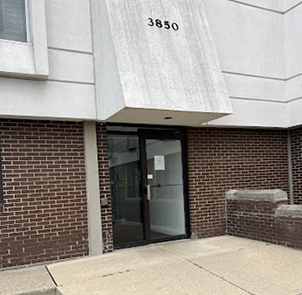How Is Pain and Suffering Calculated in a Motorcycle Accident Case?
Motorcycle accidents can be catastrophic, resulting in severe, life-altering and oftentimes life-threatening injuries. Such accidents are also often traumatic and can trigger serious psychological distress in victims. While no amount of compensation can undo the shattering effects of a motorcycle accident, it can help victims receive the medical care and attention they need to recover wholly and comfortably. For this reason, the law entitles accident victims to pursue damages via personal injury claims.
The types of damages for which victims may recover compensation vary from case to case. However, some types of damages are more common than others, one of which is pain and suffering.
What Is Pain and Suffering?
Pain and suffering is a legal term the courts use to describe the extent of the impact an accident and injuries have on a person’s life. The “pain” part refers to the actual physical pain a person lives with following the accident. The “suffering” part refers to the mental and emotional suffering victims endure because of their injuries or the trauma of the event. Examples of these types of damages are as follows:
- Fear, anxiety and depression
- Physical pain
- Embarrassment
- Insomnia
- Mental anguish
- Scarring or disfigurement
- Loss of enjoyment of life
- Grief
- Inconvenience
- Post-traumatic stress disorder
Damages such as these fall into the “non-economic” damages category. They differ from economic damages, such as medical expenses, lost wages and property damage, in that they do not come with a set dollar amount, meaning the courts cannot easily calculate them by looking to fair market value, actual receipts or statements. As a result, how much a victim may recover in pain and suffering boils down to a judge or jury’s perception of how significantly an accident impacted his or her life. For this reason, it is crucial that, if you live with substantial pain and emotional suffering following your motorcycle accident, you work with a skilled lawyer who can build a case that appeals to the deciding parties.
Common Formulas for Calculating Pain and Suffering
Though deciding parties have more difficulty calculating emotional damages than they do economic losses, many have developed formulas for making the process easier. Two formulas are more commonly used than others. Those are the Multiplier Method and the Per Diem technique.
The Multiplier Method
The multiplier method is a straightforward system that involves the deciding parties totaling the value of economic losses and multiplying it by a “multiplier.” Typically, the multiplier is a number between 1.5 and 5. However, for more severe cases — a category into which many motorcycle accident cases fall — the multiplier can be as high as six or seven. The deciding parties set the multiplier, though you and your attorney can influence the final determination.
An example of how the multiplier method might look when put into effect is as follows:
- Your economic losses total $350,000. The deciding parties determine that your injuries and related damages are moderate, so they assign a multiplier of 3.5. Once you multiply the two figures, your pain and suffering award amounts to $1,225,000.
It is important to note that the resulting figure is merely a baseline. The judge or jury has the discretion to increase or decrease the award as they see fit.
The Per Diem Approach
Per the per diem technique, you or the deciding parties assign a dollar value to each day you lived in pain and/or emotional unrest since the accident. For the greatest likelihood of obtaining the maximum amount of non-economic damages possible, make sure that the daily rate you set is reasonable. Rule of thumb dictates that a reasonable daily rate is equal to your daily wages. Once you set a daily rate, the deciding parties multiply it by the number of days between the date of the accident and the point of your maximum medical recovery.
For example, say you typically earn $200 per day. You lived in physical pain, with post-traumatic stress disorder and in fear for 412 days following the accident. Your pain and suffering award would amount to $82,400. As is the case when using the multiplier method, the courts and deciding parties may use their discretion to raise or lower an estimated award.
Because the daily rate method requires an “end date,” this approach is best for short-term injuries and if you already reached the point of maximum medical improvement. Many insurers and courts prefer the multiplier method for more catastrophic injuries.
Factors That Affect Your Multiplier or Daily Rate
At this point, you may be wondering how the judge, jury or insurer determines a fair multiplier or daily rate. Unfortunately, the process they use is highly subjective. Fortunately, they typically consider the same handful of factors. By familiarizing yourself with these factors, you can work with your attorney to bolster your case and secure the maximum award for your non-economic damages. Below are a few common factors deciding parties consider:
- The severity and permanency of your physical injury
- The traumatic nature of the accident
- The amount of pain, inconvenience and discomfort your injuries cause
- The extent to which your physical and mental injuries disrupt your life, including the impact on your career/career goals, relationships, social life and personal life
- The anticipated length of your recovery time
- Whether you will need therapy
- Whether you will need ongoing medical care, operations, prescription medications or the help of medical devices
- The recklessness or intent of the defendant’s actions
Of course, the deciding parties will also consider the strength of your evidence.
Building Your Case for Pain and Suffering Damages
Because pain and suffering is subjective, the courts are unlikely to award compensation for it unless they have sufficient evidence that you have, in fact, endured considerable physical pain and emotional duress because of your injuries. Types of proof that can help you build a solid case are as follows:
- Medical records, receipts and notes
- Photographs of your injuries, property damage and the scene of the accident
- Sworn testimony from family, friends and co-workers
- Proof of lost wages and benefits
- Photos and videos of your life and hobbies before the accident versus after the accident
- Expert testimony regarding your decrease in earning capacity
It also helps to have journal entries that clearly demonstrate your mindset in the days leading up to and following the accident. If you plan to use your personal journal as evidence, make sure to mark each entry with the date and time. Also, be honest about how you feel both physically and mentally, being careful not to exaggerate. Discuss both the day-to-day challenges you endure because of your injuries and how you feel about the anticipated long-term consequences. For example, if your inability to work means you are running out of money, do not be afraid to discuss your fears of insolvency. Finally, discuss the visits with your doctors, the perceived success or failure of each therapy session, upcoming operations and the progression of your recovery.
Discuss Your Case With a Winning Motorcycle Accident Lawyer
Despite the severity of your injuries and the traumatic nature of your accident, you may struggle to recover fair compensation from the at-fault party. To save yourself unnecessary stress, work with an experienced motorcycle accident attorney from day one. More specifically, work with an attorney with a reputation for success. To connect with such a lawyer, schedule a free consultation with Mike Morse Law Firm today.









